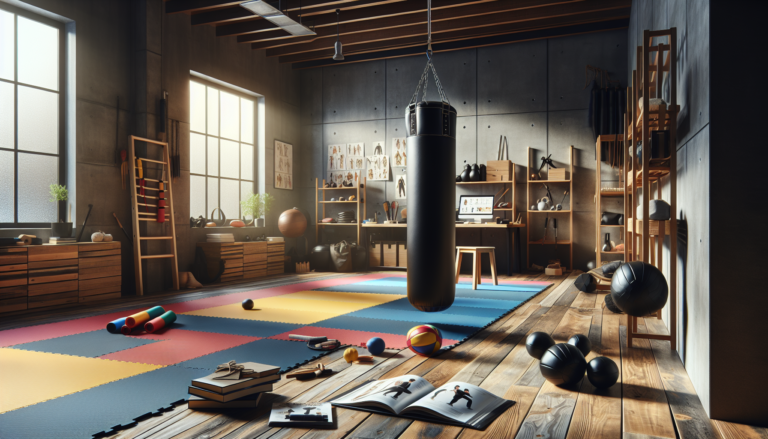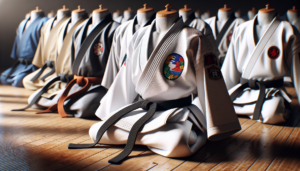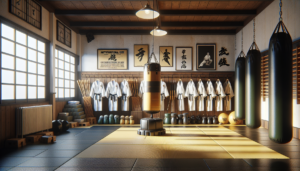Introduction to Learning Martial Arts at Home
Learning martial arts at home has become increasingly popular in recent years, offering a convenient and cost-effective alternative to traditional dojo training. With the right mindset, equipment, and resources, anyone can embark on a rewarding journey of self-discovery and mastery through home martial arts practice.
While training at home offers numerous benefits, it also comes with its own set of challenges. Without the guidance of an experienced instructor, learners may struggle with proper technique, risk injury, and face difficulties in staying motivated. However, by understanding these obstacles and taking the necessary steps to overcome them, aspiring martial artists can successfully pursue their passion from the comfort of their own homes.
Benefits of Home Martial Arts Training
One of the primary advantages of learning martial arts at home is the flexibility it provides. Practitioners can train at their own pace, on their own schedule, and without the pressure of keeping up with a class. This allows individuals to focus on their personal goals and tailor their training to their specific needs and interests.
Moreover, home martial arts practice can be a highly effective way to improve overall fitness. Many martial arts disciplines, such as karate, taekwondo, and boxing, offer a full-body workout that enhances strength, endurance, and flexibility. By incorporating martial arts exercises into a regular fitness routine, practitioners can experience significant improvements in their physical health and well-being.
Challenges of Learning Martial Arts at Home
While the benefits of home martial arts training are substantial, it is essential to acknowledge the challenges that come with this approach. One of the most significant hurdles is the lack of direct supervision from a qualified instructor. Without proper guidance, learners may develop poor technique, which can lead to ineffective training and an increased risk of injury.
Additionally, learning complex martial arts techniques can be difficult without the hands-on assistance and immediate feedback that an instructor provides. Practitioners must rely on their own judgment and self-awareness to identify and correct mistakes, which can be a daunting task for beginners.
Essential Preparations for Home Martial Arts Training
To ensure a safe and effective home martial arts practice, it is crucial to lay a solid foundation of physical conditioning and create a suitable training environment. By investing time and effort into these preparatory steps, learners can minimize the risk of injury and maximize the benefits of their training.
Basic Athletic Conditioning
Before diving into martial arts techniques, it is essential to develop a base level of physical fitness. This includes building strength, endurance, and flexibility through exercises such as push-ups, squats, lunges, and stretching routines. Cardiovascular conditioning is also vital, as many martial arts disciplines require sustained bursts of energy and quick recovery.
Incorporating basic athletic conditioning into a daily routine can help learners develop the physical strength and resilience needed to execute martial arts techniques effectively and safely. It also reduces the risk of injury by preparing the body for the demands of training.
Flexibility and Agility Training
In addition to overall physical conditioning, martial arts practitioners must focus on developing flexibility and agility. Many techniques require a wide range of motion, and a lack of flexibility can limit a practitioner’s ability to execute them correctly and efficiently.
To improve flexibility, learners can engage in stretching exercises that target specific muscle groups, such as the hamstrings, hips, and shoulders. Yoga and Pilates are excellent complementary practices that can enhance overall flexibility and body control.
Agility training involves exercises that improve balance, coordination, and the ability to change direction quickly. This can include drills such as ladder runs, cone weaves, and jump rope routines. By incorporating agility training into their practice, martial artists can develop the quick reflexes and precise movements necessary for effective combat.
Setting Up Your Home Training Space
Creating a dedicated training space is essential for a successful home martial arts practice. A well-organized and properly equipped area can provide a safe and conducive environment for learning and growth.
Essential Equipment for Home Training
While the specific equipment needed may vary depending on the martial arts discipline, there are several essential items that every home practitioner should consider:
| Equipment | Purpose |
|---|---|
| Training mat | Provides a safe, cushioned surface for practicing techniques and falls |
| Punching bag or dummy | Allows for practicing strikes and kicks with resistance |
| Resistance bands | Used for strength training and stretching exercises |
| Jump rope | Enhances cardiovascular fitness and agility |
| Protective gear (gloves, pads) | Ensures safety during training, especially when practicing with a partner |
Investing in high-quality equipment can make a significant difference in the safety and effectiveness of home training. It is important to research and select items that are appropriate for the chosen martial arts discipline and personal skill level.
Creating a Safe Training Environment
In addition to having the right equipment, it is crucial to create a safe training environment. This involves selecting a space with ample room to move around freely, without obstacles or hazards that could cause injury.
The training area should have proper lighting and ventilation to ensure comfort and visibility during practice sessions. If possible, choose a space with a high ceiling to accommodate jumping and kicking techniques.
It is also essential to consider the impact of training on the surrounding environment, such as noise levels and potential damage to floors or walls. Using protective mats and padded equipment can help minimize these concerns and maintain a positive relationship with neighbors or family members.
Effective Training Techniques for Home Practice
Once the physical foundation and training environment are established, learners can focus on developing their martial arts skills through effective home practice techniques. By incorporating a variety of training methods, practitioners can continue to progress and refine their abilities even without the direct guidance of an instructor.
Shadow Boxing and Drills
Shadow boxing is a fundamental training technique used in many martial arts disciplines, particularly in striking-based styles like boxing and kickboxing. It involves practicing techniques in the air, without a physical target, while visualizing an opponent.
Shadow boxing allows practitioners to focus on proper form, speed, and footwork, without the distraction or pressure of a live partner. It is an excellent way to develop muscle memory and refine techniques, making it an essential component of any home training routine.
In addition to shadow boxing, practitioners can incorporate various drills to target specific skills or combinations. These drills often involve repetitive movements, such as throwing a series of punches or kicks, to ingrain proper technique and build endurance.
Using Instructional Videos
Instructional videos can be a valuable resource for home martial arts practitioners, providing visual demonstrations and detailed explanations of techniques. Many experienced instructors and martial arts schools offer online video courses or tutorials that cover a wide range of topics, from basic fundamentals to advanced strategies.
When using instructional videos, it is important to select reputable sources and to approach the material with a critical eye. Not all videos are created equal, and some may contain inaccurate or misleading information. It is essential to cross-reference techniques with other reliable sources and to prioritize safety when attempting new moves.
Practicing with a Partner
While solo training is a crucial aspect of home martial arts practice, working with a partner can provide invaluable benefits. Partner drills allow practitioners to develop timing, distance control, and reaction skills in a dynamic setting.
When practicing with a partner, it is essential to establish clear communication and trust. Begin with basic, controlled drills and gradually progress to more advanced techniques as comfort and skill levels increase. Always prioritize safety and use protective gear when appropriate.
If a consistent training partner is not available, practitioners can still benefit from occasional sparring sessions or attending group classes to gain experience working with others. This exposure can help identify areas for improvement and provide motivation to continue progressing in solo training.
Structured Martial Arts Programs for Home Training
For those seeking a more structured approach to learning martial arts at home, there are several comprehensive programs available that offer guided instruction and progressive curriculums.
Overview of Popular Programs
Some of the most well-known martial arts programs for home training include:
- Fighter’s Codex: A comprehensive program that covers a wide range of martial arts techniques and principles, suitable for beginners and advanced practitioners alike.
- Fireheart: A dynamic training system that combines elements of kickboxing, karate, and self-defense, with a focus on practical application and fitness.
- Combat HIIT: A high-intensity interval training program that incorporates martial arts techniques for a full-body workout and improved cardiovascular endurance.
- Boxer Prime: A boxing-specific program that emphasizes proper form, footwork, and defensive skills, ideal for those interested in the sweet science.
- Avatar Upgrade: A holistic martial arts program that integrates physical training with mental and spiritual development, drawing from a variety of traditional and modern disciplines.
Each of these programs offers a unique approach to home martial arts training, catering to different goals, interests, and skill levels.
Choosing the Right Program for You
When selecting a structured martial arts program for home training, it is important to consider several factors:
- Goals: Identify your primary reasons for learning martial arts, whether it be self-defense, fitness, competition, or personal growth, and choose a program that aligns with these objectives.
- Learning style: Consider your preferred learning methods, such as visual demonstrations, written explanations, or interactive exercises, and select a program that caters to your needs.
- Time commitment: Evaluate your schedule and determine how much time you can realistically dedicate to training, then choose a program that fits within these constraints.
- Budget: Compare the costs of different programs, including any necessary equipment or additional resources, and select an option that provides the best value for your investment.
By carefully evaluating these factors and researching the available options, you can find a structured martial arts program that supports your goals and enhances your home training experience.
Maintaining Consistency and Motivation
One of the most significant challenges of learning martial arts at home is maintaining consistency and motivation over time. Without the structure and accountability of a traditional dojo, it can be easy to lose focus or become discouraged by perceived lack of progress.
Setting Goals and Tracking Progress
To stay motivated and engaged in home martial arts training, it is essential to set clear, achievable goals and track progress regularly. These goals can be short-term, such as mastering a specific technique or increasing training frequency, or long-term, like preparing for a competition or reaching a new belt level.
Keeping a training journal is an effective way to monitor progress and identify areas for improvement. Record details such as the duration and content of each session, successes and challenges encountered, and any insights or breakthroughs experienced. Regularly reviewing this journal can provide a sense of accomplishment and help maintain perspective on the overall training journey.
Staying Motivated and Overcoming Plateaus
Even with clear goals and consistent progress tracking, there may be times when motivation wanes or progress seems to stall. These plateaus are a normal part of any learning process and can be overcome with patience, persistence, and a few key strategies:
- Vary training routines: Incorporate new techniques, drills, or training methods to keep practice sessions fresh and engaging.
- Seek inspiration: Watch videos of skilled martial artists, read books or articles about the discipline, or connect with other practitioners to reignite passion and enthusiasm.
- Celebrate milestones: Acknowledge and reward progress, no matter how small, to maintain a positive mindset and sense of accomplishment.
- Embrace challenges: View plateaus and setbacks as opportunities for growth and learning, rather than failures or limitations.
By adopting a growth mindset and implementing these strategies, home martial arts practitioners can overcome obstacles and maintain the motivation needed to achieve their goals.
Conclusion: The Journey of Learning Martial Arts at Home
Learning martial arts at home is a unique and rewarding journey that offers countless benefits for the mind, body, and spirit. By embracing the challenges and opportunities of solo training, practitioners can develop valuable skills, cultivate inner strength, and achieve personal growth.
As with any worthwhile endeavor, the path of home martial arts training requires dedication, discipline, and perseverance. It is a lifelong journey of self-discovery and mastery, one that extends far beyond the confines of the training space.
By laying a strong foundation of physical conditioning, creating a safe and effective training environment, and utilizing a variety of training techniques and resources, aspiring martial artists can successfully pursue their passion from the comfort of their own homes.
Whether following a structured program or forging an independent path, the key to success in home martial arts training lies in consistency, adaptability, and an unwavering commitment to personal growth. With these guiding principles, anyone can unlock their full potential and experience the profound benefits of this transformative practice.






